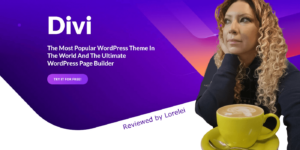You might be thinking: with so much content already online, does starting a blog in 2025 even make sense? It’s a fair question. The internet is overflowing with information, and getting noticed can feel like an uphill battle. But this crowded online space is exactly why blogging is still so valuable. It’s not about adding to the noise; it’s about creating your own corner of the internet and connecting with a dedicated audience. This means developing content that truly resonates and provides real value.

Building Your Digital Authority
One of the biggest benefits of blogging is the chance to become a recognized voice in your chosen area. By regularly sharing insightful posts, you build credibility and trust with your readers. This authority can lead to exciting new opportunities, such as partnerships, collaborations, and even public speaking. Your blog becomes your online home base – a place to showcase your knowledge and connect with others who share your interests.
Creating Sustainable Income Streams
A successful blog can also open up various income streams. While advertising and sponsored posts are popular options, there’s much more you can do. Your blog can be a launchpad for digital products, online courses, or even physical merchandise. Building a loyal audience means you’re also creating a group of potential customers interested in what you offer.
Connecting With Your Audience
As of 2025, there are over 600 million blogs worldwide. That’s about 31.6% of all 1.9 billion websites! And over 7.5 million new blog posts are published every single day. Find more detailed statistics here. While these numbers might seem intimidating, they also represent a massive opportunity. With the right approach, you can stand out from the crowd and connect with the people you want to reach. This means understanding their needs and crafting content that meets those needs in a compelling and engaging way.
To help illustrate the key motivations behind starting a blog, let’s take a look at the following table:
Top Reasons to Start a Blog
This table outlines the primary motivations for starting a blog and how they align with different goals and outcomes.
| Motivation | Personal Benefit | Professional Benefit | Time Investment |
|---|---|---|---|
| Sharing Expertise | Increased knowledge and skill development through research and writing | Positioning as a thought leader and expert in your field | Significant, requires consistent effort |
| Building Community | Connection with like-minded individuals and fostering relationships | Networking opportunities and potential collaborations | Moderate, depends on community engagement level |
| Generating Income | Monetization through advertising, affiliate marketing, or selling products/services | Increased brand visibility and lead generation | High, requires business development and marketing efforts |
| Personal Branding | Enhanced online presence and reputation | Career advancement opportunities and increased visibility to recruiters | Moderate, consistent effort needed for building a strong brand |
As you can see, the reasons for starting a blog are diverse and depend on individual goals. Whether you’re seeking personal growth, professional development, or a new income stream, blogging can offer a path to achieve these aims.
Overcoming Blogging Anxieties
Many new bloggers feel anxious about getting started. Worries about competition, technical hurdles, and finding the time to write are all common. But many of these fears are based on misconceptions. Blogging in 2025 isn’t about becoming an overnight success. It’s about building something sustainable for the long term. It’s a marathon, not a sprint, and the focus should always be on creating valuable content for your target audience.
Selecting Your Perfect Platform Without Decision Paralysis

Picking the right blogging platform in 2025 can be a bit like navigating a maze. So many options, each with its own quirks and perks! This can easily lead to decision paralysis, stopping you before you even begin. But don’t worry, choosing the right platform is a crucial first step, and we’re here to help you find your way.
Key Factors To Consider
Instead of getting lost in a whirlwind of features, let’s focus on what truly matters for your blogging success. Think about where you want to go, your comfort level with tech, and how much you’re willing to spend.
- Ownership and Control: Do you want to be the master of your blogging domain? Some platforms offer more freedom to tweak and customize than others. Consider how much control you really need.
- Ease of Use: Are you a tech whiz or a beginner? Some platforms are super simple to use, while others need a bit more technical know-how. If you’re just starting, a user-friendly interface is your best friend.
- Growth Potential: Picture your blog five years from now. Choose a platform that can grow with you. This might mean features like email marketing, e-commerce options, and more.
- Monetization Options: Dreaming of making money from your blog? Some platforms have restrictions on how you can earn, while others are more open. Consider your long-term money-making goals.
To help you compare, let’s take a look at some of the most popular blogging platforms out there. The table below highlights some key differences to help you make an informed decision.
Blogging Platform Comparison: A detailed comparison of the top blogging platforms available today, highlighting features, pricing, and ideal user types.
| Platform | Ease of Use | Customization | SEO Features | Cost | Best For |
|---|---|---|---|---|---|
| WordPress.org | Moderate | High | Excellent | Varies (hosting, themes, plugins) | Bloggers who want full control and scalability |
| Wix | Easy | Moderate | Good | Free – Premium plans available | Beginners and bloggers who prioritize ease of use |
| Squarespace | Easy | Moderate | Good | Paid plans only | Bloggers who value aesthetics and simplicity |
| Blogger | Easy | Limited | Basic | Free | Casual bloggers and those on a tight budget |
As you can see, each platform caters to different needs. WordPress.org offers maximum control but requires a bit more technical skill. Wix and Squarespace are easier to use, but they come with some limitations. Blogger is a great free option for casual blogging.
Avoiding Common Pitfalls
Don’t fall into the trap of picking a platform based on price alone. Free is nice, but it often comes with limitations that can hold your blog back. Think about customization options and the ability to monetize your content.
Also, don’t get lost in comparing every single feature. Focus on what’s essential for your blog’s success. For a more in-depth look at starting a blog, check out our guide: How to master the art of starting a blog.
Making The Right Choice
The perfect platform is the one that fits your goals, skills, and budget. By considering these factors, you can avoid decision paralysis and choose a platform that sets you up for success. Think about what you want to achieve and pick a platform that can support your ambitions. Don’t be afraid to try a few different platforms to find the one that feels right. Starting a blog in 2025 is exciting, and choosing the right platform is the first step toward achieving your blogging dreams! You might be interested in: How to master the art of starting a blog.
Developing Content That Actually Stands Out

Starting a blog in 2025 takes more than just clicking “publish.” It requires content that truly grabs attention. Simply rehashing existing information won’t work in today’s busy online environment. This section explores creating unique content that not only attracts readers but also turns them into loyal fans. That means understanding your audience, developing your own voice, and structuring your content effectively.
Finding Your Authentic Voice
Your blog should reflect who you are. Authenticity is the key to connecting with your readers. But finding your authentic voice doesn’t mean ignoring your audience. Think of it as a conversation: you share your unique perspective while addressing their needs and interests. For example, if your blog offers productivity tips for entrepreneurs, your authentic voice might be humorous and encouraging, or direct and analytical, depending on both your personality and your target audience.
Identifying Content Gaps
A great way to stand out is to find what’s missing in your niche. What questions are your competitors not answering? Are there any perspectives they’re overlooking? By addressing these content gaps, you offer unique value to your readers and become a go-to source. This might mean creating content in a different format (like video if others are focused on text) or exploring a niche topic within a broader category.
Building Sustainable Content Pillars
Content pillars are the foundation of your blog. They’re the core topics you’ll consistently cover, forming the backbone of your content strategy. For example, if your blog is about starting a blog in 2025, your content pillars might include platform selection, content creation, SEO, and monetization. This consistent approach provides structure and helps you establish expertise in key areas. User engagement and visuals also play important roles. Articles with images get 94% more views than those without, and 71% of bloggers use visuals in their marketing. Learn more about blogging statistics.
Editorial Planning for Success
Whether you plan meticulously or create spontaneously, some editorial planning is essential for consistent output. This doesn’t have to be rigid. Even a simple content calendar outlining upcoming topics can be incredibly helpful.
- Brainstorming: Set aside time to brainstorm new ideas. Try mind maps or freewriting to generate fresh angles.
- Keyword Research: Understanding what your audience is searching for is important. Tools like Google Keyword Planner can help identify relevant keywords.
- Content Scheduling: Plan when you’ll publish to maintain a consistent schedule. This keeps you accountable and creates a predictable rhythm for readers.
Consistency is key, but be flexible. Adapt your plan based on audience feedback and trending topics. Starting a blog in 2025 is exciting, and creating outstanding content is crucial for success. By focusing on these strategies, you can develop a blog that truly connects with your audience and establishes your unique online presence.
SEO Essentials That Actually Move the Needle

Starting a blog in 2025 is exciting! But attracting readers requires a good understanding of Search Engine Optimization (SEO). While it might seem complicated at first, focusing on a few key elements can significantly boost your blog’s visibility. This section breaks down essential SEO tactics into practical steps, helping you attract organic traffic and build a thriving online presence.
Keyword Research: The Foundation of SEO Success
Keywords are the terms people type into search engines. Effective keyword research involves finding the right words and phrases that connect with your blog’s topic and your audience. Think like your readers! What questions would they ask Google?
For example, if your blog is about starting a blog in 2025, relevant keywords might include “best blogging platforms 2025”, “how to monetize a blog”, or “blogging for beginners”. Tools like Google Keyword Planner can help you discover related keywords, see how often they’re searched, and understand the competition.
Aim for long-tail keywords, which are more specific phrases. These often have less competition and draw a more targeted audience. For instance, instead of “blogging”, consider “starting a lifestyle blog in 2025”.
On-Page Optimization: Making Your Content Shine
On-page optimization means structuring your content so it’s both enjoyable for readers and easy for search engines to understand. This includes:
- Optimizing Title Tags and Meta Descriptions: These are essential for getting clicks in search results. Your title tag should accurately describe your post and include relevant keywords. The meta description summarizes your post, encouraging users to click and learn more.
- Using Headings (H1-H6): Headings improve readability and help search engines understand your content’s structure. Your main heading (H1) should be unique and reflect the overall topic. H2 and H3 subheadings break down your content into smaller, digestible chunks.
- Internal and External Linking: Link to other helpful articles on your blog (internal linking) and to trustworthy external sources. This improves navigation and adds context and value.
Content is King: Providing Real Value to Your Audience
While SEO is essential, valuable content is the heart of any successful blog. Focus on your audience’s needs. What challenges are they facing, and how can your blog help? High-quality content is:
- Informative and Engaging: Provide valuable insights, answer questions completely, and present information clearly. Use visuals, examples, and storytelling to keep your readers interested.
- Original and Unique: Don’t just rehash what’s already out there. Offer a fresh perspective, do your own research, and share original insights.
- Consistently Updated: Regularly publishing new content shows readers and search engines that your blog is active and relevant. Consistency is key to building a loyal audience and improving search rankings. It’s no wonder that 93% of online experiences start with a search engine. About 75% of users stick to the first page of search results, and 66% of bloggers already use SEO. For more insights, check out these Blogging Statistics.
Building Authority and Backlinks: Earning Trust and Recognition
Backlinks (links from other websites to yours) are a vital SEO signal. They show search engines that your blog is a trusted source. Earning backlinks takes time and effort. Here are a few effective strategies:
- Guest Blogging: Write high-quality content for other blogs in your niche. This introduces your blog to a new audience and generates valuable backlinks.
- Outreach and Promotion: Share your blog content on social media and through email marketing. This increases visibility and can attract backlinks from other websites. If you’re looking to dive deeper, check out this resource on How to master SEO copywriting.
Starting a blog in 2025 requires a smart approach to SEO. Focusing on these key elements allows you to draw in organic traffic, build a loyal following, and establish your blog as a go-to resource.
Building a Loyal Audience Beyond Social Media Tricks
Starting a blog in 2025 is about more than just great writing. It’s about building a dedicated community around your content. Social media platforms like Facebook can help, but relying only on algorithms and fleeting trends is a risky strategy.
This section explores how to cultivate a loyal audience that sticks around, no matter what changes happen in the social media world. We’ll look at building genuine connections, understanding your audience, and finding diverse ways to reach them.
Cultivating a Community: Turning Readers Into Fans
Think of building a loyal readership like tending a garden. You need to nurture those relationships, consistently offer valuable content, and create a space where readers feel welcome.
This means actively engaging with your audience, responding to comments, and sparking discussions. Try asking thought-provoking questions at the end of your blog posts to encourage interaction and build a sense of community.
You could even create a dedicated online forum or Facebook group where readers can connect with each other and share their thoughts.
Diversifying Your Reach: Going Beyond Social Media
Social media is a powerful tool, but it’s smart to diversify your reach. This makes you less reliant on algorithms and ensures your audience can find you through multiple channels.
- Email Marketing: Building an email list lets you communicate directly with your audience, sharing updates, exclusive content, and promotions.
- Search Engine Optimization (SEO): Optimizing your blog for search engines like Google helps attract organic traffic from people actively searching for the information you provide.
- Collaborations and Partnerships: Working with other bloggers in your niche can introduce your blog to a wider audience.
Measuring What Matters: Beyond Vanity Metrics
Focusing only on vanity metrics like follower count can be misleading. Big numbers might look impressive, but they don’t always translate to genuine engagement or loyalty.
Instead, focus on metrics that reflect real connection and interaction:
- Comments and Shares: These show that your content resonates with your audience and encourages them to participate.
- Email Open and Click-Through Rates: These metrics indicate how engaged your email subscribers are with your content.
- Website Traffic Sources: Understanding where your traffic comes from helps you identify the most effective channels for reaching your target audience.
Learning From Success Stories: Real-World Examples
Studying successful bloggers in your niche can offer valuable insights. Analyze their strategies. What are they doing to engage their audience? How are they diversifying their reach? What type of content resonates most with their followers? Real-world examples provide practical guidance and can inspire your own approach.
Practical Strategies For Starting a Blog in 2025
Consistency is key when starting a blog. Regularly publishing high-quality content keeps your audience engaged and coming back for more. Here are a few practical tips:
- Create a Content Calendar: Planning your content ahead of time helps you maintain a consistent publishing schedule and ensures you’re covering relevant topics.
- Repurpose Your Content: Transform your blog posts into different formats, like videos, infographics, or social media updates, to expand your reach.
- Engage with Your Audience: Respond to comments, answer questions, and participate in discussions to build a strong sense of community.
Focusing on these strategies can help you build a loyal audience that extends beyond social media’s fleeting trends. Starting a blog in 2025 requires a long-term vision and a commitment to building genuine connections. This approach creates a thriving online community that supports your growth and provides real value to your readers.
Monetization Strategies That Work From Day One
Starting a blog in 2025 is often fueled by the desire to earn an income. While overnight riches are a long shot, building a sustainable income stream from your blog is absolutely possible. This section goes beyond the hype and explores realistic monetization strategies for blogs of all sizes, from brand new to well-established.
Quick Wins: Affiliate Marketing and Sponsored Content
Even with a small, engaged audience, you can start monetizing relatively quickly with affiliate marketing. This involves partnering with brands and recommending their products or services to your readers. You earn a commission for every sale made through your unique affiliate link. The trick is to choose partnerships that truly align with your content and audience. For instance, if your blog focuses on vegan cooking, partnering with plant-based food companies would be a natural fit.
Sponsored content, where brands pay you to create content featuring their products or services, is another early monetization option. Transparency is key here. Always disclose sponsored content to maintain your readers’ trust. This builds credibility and solidifies your reputation as a reliable information source.
Building Long-Term Value: Digital Products and Courses
As your blog grows and you become known as an expert in your niche, creating and selling digital products becomes a viable and often profitable avenue. These could be ebooks, online courses, templates, or exclusive content. The beauty of digital products is the potential for passive income. Once created, they can be sold repeatedly with minimal upkeep.
Developing an online course requires more initial investment but can yield significant returns. By sharing your knowledge through structured lessons and interactive modules, you offer real value to your audience while building a solid income stream.
Diversifying Your Income Streams: A Balanced Approach
Many successful bloggers use a combination of monetization strategies. This creates a more stable and resilient income model. You might, for example, combine affiliate marketing with digital product sales and sponsored content. This diversification not only boosts your earning potential but also safeguards you against fluctuations in any one income source. You might find this helpful: How to master blog monetization.
Pricing and Negotiation: Knowing Your Worth
Whether you’re pricing digital products or negotiating sponsored content deals, understanding your value is crucial. Research industry standards and consider factors like your audience size, engagement rates, and the value you deliver. Don’t undersell yourself. Your pricing should reflect this increased value as your blog gains traction and your influence grows.
Maintaining Audience Trust: Transparency Is Key
Monetizing your content requires carefully considering your audience. Transparency is paramount. Be upfront about sponsored content and affiliate partnerships. This honesty fosters trust and strengthens your connection with your readers. Focus on recommending products and services you genuinely believe in. This authenticity resonates with your audience and cultivates long-term loyalty.
Realistic Timelines and Expectations
Building a profitable blog takes time and consistent work. Don’t expect to get rich quick. Concentrate on creating high-quality content, engaging with your readers, and building a strong online presence. With patience and persistence, monetization will follow. While affiliate marketing and sponsored content can provide faster returns, digital products and courses take more time to develop. Understand the timelines involved with each method and set realistic expectations. Starting a blog in 2025 with monetization in mind requires a strategic approach, thoughtful planning, and a commitment to building a valuable platform. By diversifying your monetization strategies and prioritizing audience trust, you can create a sustainable income and achieve your blogging ambitions.
Essential Tools and Resources Worth Your Investment
Starting a blog in 2025 takes more than just passion and a laptop. You also need the right tools to streamline your workflow, improve your content, and grow your audience. The sheer number of blogging tools out there can feel overwhelming, so this section offers a curated list of resources worth checking out, based on insights from experienced bloggers.
Content Creation and Management: Your Blogging Foundation
First things first, you need a solid platform to host your blog. WordPress.org offers incredible flexibility and control while requiring a bit more technical setup. This open-source platform allows for extensive customization and works seamlessly with a huge library of plugins and themes. If you’re looking for something simpler, platforms like Wix https://www.wix.com/ and Squarespace https://www.squarespace.com/ provide user-friendly interfaces and pre-designed templates that are perfect for beginners.
Beyond the platform itself, consider these tools for creating and managing your content:
- Grammarly: This AI-powered writing assistant helps polish your grammar, spelling, and punctuation, making sure your content is professional. The premium version offers advanced features like tone detection and plagiarism checks. https://www.grammarly.com/
- Google Docs: This free, cloud-based word processor allows for real-time collaboration, which is great for co-writing or editing blog posts. Plus, its built-in version history means you’ll never lose your work. https://www.google.com/docs/about/
- Canva: Creating eye-catching visuals is essential for grabbing attention and enhancing your content. Canva offers a user-friendly interface for designing images, infographics, and social media posts, even if you don’t have much design experience. https://www.canva.com/
Search Engine Optimization (SEO): Driving Organic Traffic
Attracting readers organically through search engines is key for long-term blog growth. These tools can help you optimize your content and boost your search ranking:
- Semrush: This comprehensive SEO toolkit offers keyword research, competitor analysis, and site audit features. It’s a premium tool, but its insights can be incredibly valuable for understanding your audience and finding opportunities to improve your visibility. https://www.semrush.com/
- Ahrefs: Similar to Semrush, Ahrefs offers a powerful set of SEO tools, including backlink analysis and rank tracking. Its robust features help you understand your competitors’ strategies and pinpoint areas for improvement. https://ahrefs.com/
- Google Search Console: This free tool from Google provides valuable data on how your website performs in search results. It helps you spot technical issues, track keyword rankings, and see how users are finding your blog. https://search.google.com/search-console/about
Productivity and Time Management: Maximizing Your Efficiency
Blogging takes dedication and efficient time management. These tools can help you stay organized and productive:
- Trello: This project management tool uses a Kanban-style board system, which is perfect for organizing blog post ideas, tracking progress, and managing editorial calendars. Its collaborative features make it ideal for team projects. https://trello.com/
- Asana: Another popular project management platform, Asana offers a range of features for task management, team communication, and workflow automation. Its flexible interface adapts to various project styles. https://asana.com/
- Toggl Track: Tracking your time spent on different blogging tasks offers valuable insights into your productivity and helps you identify areas for improvement. Toggl Track offers a simple and intuitive interface for time tracking. https://toggl.com/track/
Free Alternatives and Budget-Conscious Choices
While premium tools can be helpful, several free resources offer similar functionality:
- Ubersuggest: This free keyword research tool offers insights into search volume, keyword difficulty, and related keywords, making it a great starting point if you’re on a budget. https://neilpatel.com/ubersuggest/
- Google Analytics: This free analytics platform provides in-depth data on your website traffic, user behavior, and content performance. Understanding these metrics is essential for optimizing your content and growing your audience. https://analytics.google.com/
Choosing the Right Tools: Finding Your Perfect Fit
The best tools for your blog will depend on your individual needs, budget, and technical skills. Don’t feel like you need to invest in every premium tool out there. Start with the basics and gradually add new resources as your blog grows. For more tips on creating effective content and maximizing your blog’s potential, check out Lorelei Web: https://loreleiweb.com. It’s a great resource for entrepreneurs, especially those with ADD, looking for practical strategies for business management, productivity, and content marketing.

Lorelei has been an online entrepreneur, marketer and writer since 2006. Her biggest passion is WordPress, which is why she switched to being a full-time blogger 20 years ago and hasn’t looked back since. With so many years of experience behind her, she is an expert in copywriting, SEO, marketing and business strategies.






